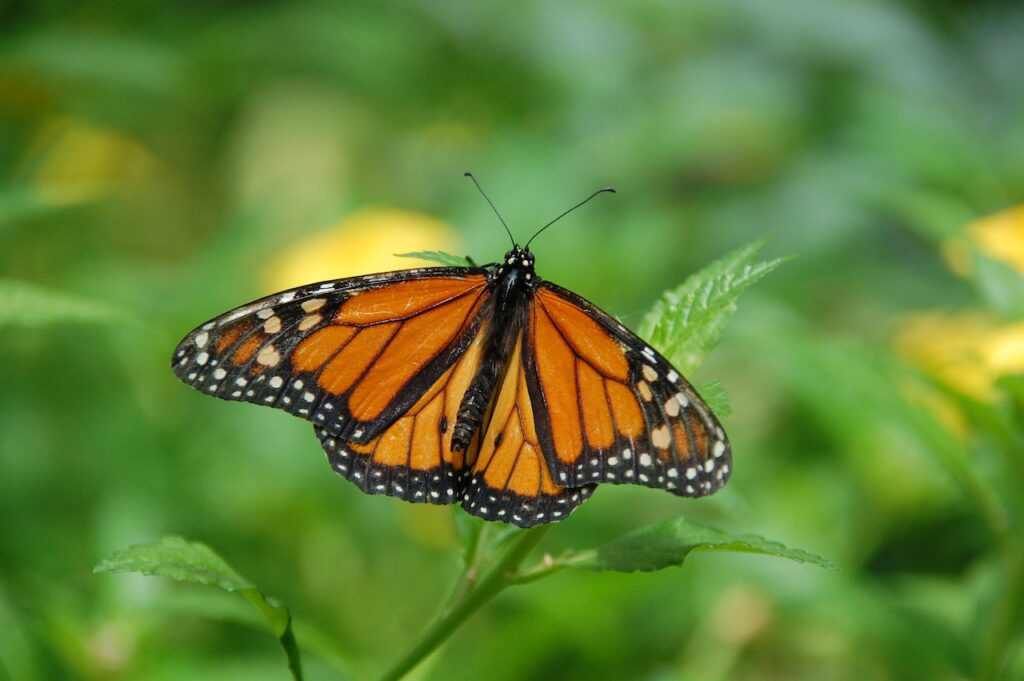
The migratory monarch butterfly Danaus plexippus plexippus, known for its spectacular annual journey of up to 4,000 kilometers through the Americas, has been added to the Red List of the World Conservation Union (IUCN). International Union for Conservation of Nature IUCN Endangered Species category, threatened by habitat destruction and climate change.
The IUCN Red List currently includes 147,517 species, of which 41,459 are threatened with extinction.
"The Red List update highlights the fragility of nature's wonders, such as the unique spectacle of monarch butterflies migrating thousands of miles," said Dr. Bruno Oberle, IUCN Director General.
"To preserve nature's rich diversity, we need effective and fairly governed protected and conserved areas, along with decisive action to respond to climate change and restore ecosystems. In turn, biodiversity conservation supports communities by providing essential services such as food, water and sustainable jobs," he said.
The migratory monarch butterfly, "Endangered", is a subspecies of the monarch butterfly Danaus plexippus.
The native population, known for its migrations from Mexico and California in winter to summer breeding grounds in the United States and Canada, has declined by 22 to 72 percent in the last decade.
Legal and illegal logging and deforestation to make room for agriculture and urban development have already destroyed much of the butterflies' overwintering refuges in Mexico and California, while pesticides and herbicides used in intensive agriculture throughout the species' range kill butterflies and milkweed, the host plant on which monarch butterfly larvae feed, the organization said in a statement.
He noted that climate change has significantly impacted the migratory monarch butterfly and is a rapidly growing threat because "drought limits milkweed growth and increases the frequency of catastrophic forest fires, extreme temperatures trigger earlier migrations, before milkweed is available, while severe weather events kill millions of butterflies".
The western population is at greatest risk of extinction, having declined by an estimated 99.9 percent from as many as 10 million to 1,914 butterflies between the 1980s and 2021. The larger eastern population has also declined by 84 percent between 1996 and 2014, the IUCN said.
In this regard, he noted that there is still concern about whether there are enough butterflies left to maintain populations and avoid extinction.
"It is painful to see monarch butterflies and their extraordinary migration teetering on the brink of collapse, but there are signs of hope. Many people and organizations have come together to try to protect this butterfly and its habitats. From planting native milkweed and reducing pesticide use to supporting overwintering site protection and contributing to community science, we can all play a role in making sure this iconic insect makes a full recovery," said Anna Walker, Species Survival Officer at the New Mexico BioPark Society, who led the monarch butterfly assessment.
To the news, he said, is added the unfortunate evidence that all still existing species of sturgeon in the northern hemisphere, also migratory, due to dams and poaching, which push this group of animals, the most endangered in the world, is even closer to the edge of the abyss.
The global sturgeon reassessment released last week reveals that 100 percent of the world's remaining 26 sturgeon species are now threatened with extinction, up from 85 percent in 2009.
The assessments are based on refined calculations, which show that their decline over the last three generations is steeper than previously thought.
The Yangtze sturgeon Acipenser dabryanus has been downgraded from Critically Endangered to Extinct in the Wild, 17 species are now Critically Endangered, three are Endangered and five are Vulnerable on the IUCN Red List. The reassessment has also confirmed the extinction of the Chinese paddlefish Psephurus gladius.
Famous for their size, with the Critically Endangered Huso huso beluga, capable of growing up to eight meters and weighing up to 1,700 kilograms, sturgeons have been overexploited for their meat and caviar for centuries.
Despite being protected under international law, poaching continues to affect more than half of these species, and stricter enforcement of regulations on the illegal sale of sturgeon meat and caviar is essential to halt further declines.
Dams affect all sturgeon species migrating to their breeding grounds, while river warming due to climate change further disrupts the reproduction of these fish. Restoration of freshwater ecosystems and the construction of effective fish passages, together with restocking, which has already proven effective for species such as the Critically Endangered Adriatic sturgeon Acipenser naccarii, are key measures to support the long-term survival of the world's sturgeons.
You may be interested in: Visiting Hyperion, the tallest living thing on the planet, could cost you jail time


